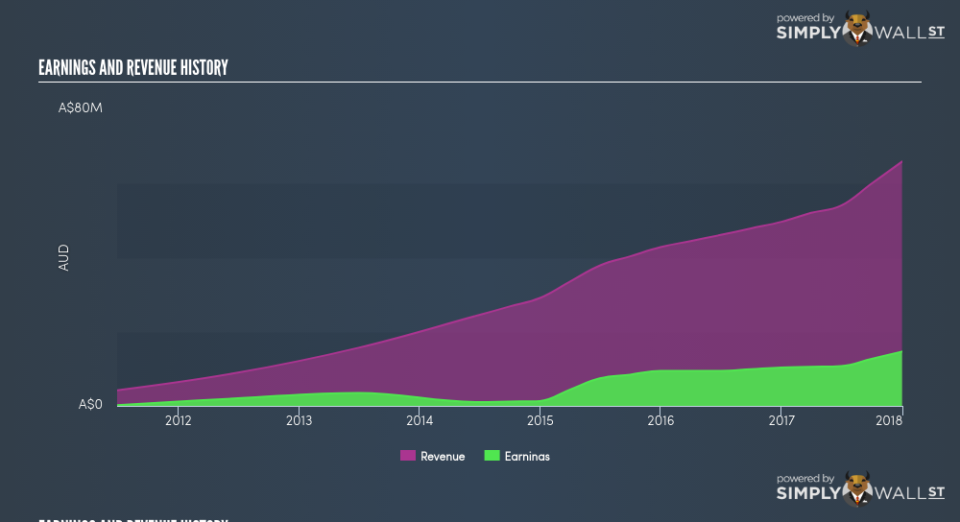Want To Invest In Pioneer Credit Limited (ASX:PNC)? Here’s How It Performed Lately

Assessing Pioneer Credit Limited’s (ASX:PNC) past track record of performance is a useful exercise for investors. It allows us to understand whether the company has met or exceed expectations, which is a great indicator for future performance. Below, I assess PNC’s latest performance announced on 31 December 2017 and evaluate these figures to its historical trend and industry movements. Check out our latest analysis for Pioneer Credit
Were PNC’s earnings stronger than its past performances and the industry?
PNC’s trailing twelve-month earnings (from 31 December 2017) of AU$14.66m has jumped 41.83% compared to the previous year. Furthermore, this one-year growth rate has exceeded its 5-year annual growth average of 31.88%, indicating the rate at which PNC is growing has accelerated. What’s enabled this growth? Well, let’s take a look at whether it is solely a result of an industry uplift, or if Pioneer Credit has experienced some company-specific growth.
In the last couple of years, Pioneer Credit grew its bottom line faster than revenue by successfully controlling its costs. This resulted in a margin expansion and profitability over time. Inspecting growth from a sector-level, the Australian diversified financial industry has been growing, albeit, at a muted single-digit rate of 5.37% in the previous year, and a substantial 12.05% over the past five. This means whatever tailwind the industry is gaining from, Pioneer Credit is capable of amplifying this to its advantage.
In terms of returns from investment, Pioneer Credit has not invested its equity funds well, leading to a 15.18% return on equity (ROE), below the sensible minimum of 20%. However, its return on assets (ROA) of 6.82% exceeds the AU Diversified Financial industry of 2.15%, indicating Pioneer Credit has used its assets more efficiently. And finally, its return on capital (ROC), which also accounts for Pioneer Credit’s debt level, has increased over the past 3 years from 3.74% to 10.54%. This correlates with a decrease in debt holding, with debt-to-equity ratio declining from 120.32% to 105.14% over the past 5 years.
What does this mean?
Pioneer Credit’s track record can be a valuable insight into its earnings performance, but it certainly doesn’t tell the whole story. Companies that have performed well in the past, such as Pioneer Credit gives investors conviction. However, the next step would be to assess whether the future looks as optimistic. I suggest you continue to research Pioneer Credit to get a more holistic view of the stock by looking at:
Future Outlook: What are well-informed industry analysts predicting for PNC’s future growth? Take a look at our free research report of analyst consensus for PNC’s outlook.
Financial Health: Is PNC’s operations financially sustainable? Balance sheets can be hard to analyze, which is why we’ve done it for you. Check out our financial health checks here.
Other High-Performing Stocks: Are there other stocks that provide better prospects with proven track records? Explore our free list of these great stocks here.
NB: Figures in this article are calculated using data from the trailing twelve months from 31 December 2017. This may not be consistent with full year annual report figures.
To help readers see pass the short term volatility of the financial market, we aim to bring you a long-term focused research analysis purely driven by fundamental data. Note that our analysis does not factor in the latest price sensitive company announcements.
The author is an independent contributor and at the time of publication had no position in the stocks mentioned.

 Yahoo Finance
Yahoo Finance 
